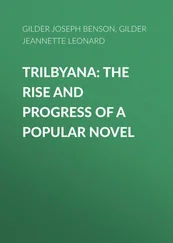Wilhelm Joseph von Wasielewski - The Violoncello and Its History
Здесь есть возможность читать онлайн «Wilhelm Joseph von Wasielewski - The Violoncello and Its History» — ознакомительный отрывок электронной книги совершенно бесплатно, а после прочтения отрывка купить полную версию. В некоторых случаях можно слушать аудио, скачать через торрент в формате fb2 и присутствует краткое содержание. Жанр: foreign_antique, foreign_home, music_dancing, на английском языке. Описание произведения, (предисловие) а так же отзывы посетителей доступны на портале библиотеки ЛибКат.
- Название:The Violoncello and Its History
- Автор:
- Жанр:
- Год:неизвестен
- ISBN:нет данных
- Рейтинг книги:3 / 5. Голосов: 1
-
Избранное:Добавить в избранное
- Отзывы:
-
Ваша оценка:
- 60
- 1
- 2
- 3
- 4
- 5
The Violoncello and Its History: краткое содержание, описание и аннотация
Предлагаем к чтению аннотацию, описание, краткое содержание или предисловие (зависит от того, что написал сам автор книги «The Violoncello and Its History»). Если вы не нашли необходимую информацию о книге — напишите в комментариях, мы постараемся отыскать её.
The Violoncello and Its History — читать онлайн ознакомительный отрывок
Ниже представлен текст книги, разбитый по страницам. Система сохранения места последней прочитанной страницы, позволяет с удобством читать онлайн бесплатно книгу «The Violoncello and Its History», без необходимости каждый раз заново искать на чём Вы остановились. Поставьте закладку, и сможете в любой момент перейти на страницу, на которой закончили чтение.
Интервал:
Закладка:
Hesse had twenty children, only eight of whom, however, survived him. His eldest son, Louis Christian, became, under his father’s tuition, a clever gambist, and entered as such into the service of the Prince of Prussia in 1768.
Besides his son, Hesse formed the excellent gamba player, Joh. Christ. Hextel, born 1699, in the Swabian town of Oettingen. His father, who was Kapellmeister to the Prince of Oettingen, and then worked in the same capacity at the Ducal Court of Merseburg, wished that the boy should study, and entered him, in 1716, at the University of Halle. Here he occupied himself by preference with music, and when he returned home he gained his father’s permission to devote himself exclusively to the art. The Duke of Merseburg announced his willingness to grant him the means of pursuing his studies either in Paris, under Marais and Forqueray, or at Darmstadt, under Hesse’s direction. The young Hextel himself decided for Hesse, who took him as a pupil under exceptional conditions. After two years’ study he left Darmstadt, performed at concerts at the Courts of Eisenach, Merseburg, Weissenfels, Zerbst, and Köthen, and accepted a post in the Eisenach Kapelle. During the years 1723-27 he was travelling in Germany and Holland; played in 1732 before Frederick the Great at Ruppin, while he was still Crown Prince; and then undertook the post of Concert Director at Eisenach. When, after the death of its prince (1742), the Eisenach band was dissolved, through the recommendation of Franz Benda he was appointed Concert Director at the Court of Strelitz. He filled this place until 1753, and died a year after. Of his numberless compositions only six sonatas for violin “solo e continuo,” 1727, were published at Amsterdam.
As noteworthy German gambists belonging to the first half of the eighteenth century must be mentioned—
Emmerling, Hard, and Bellerman. The former of these, born at Eisleben, was in the year 1730 Chamber Musician and Viola da Gambist to the Margrave Louis of Brandenburg, and also, as Gerber says, instrumental composer.
Joh. Daniel Hard, born May 8, 1696, in Frankfurt on the Main, remained at the outset of his musical career for five years in the service of King Stanislaus during his residence at Zweibrücken, and then was Chamber Musician to the Bishop of Würzburg and the Duke of Franken, Joh. Phil. Franz von Schönborn. After four years he gave up this service and took a post as Chamber Musician at the Wurtemburg Court. Later on he again became Concertmeister and finally Capellmeister to the Duke Carl Eugene. He still filled this office at Stuttgard in 1757. Further accounts of him are wanting.
Constantine Bellerman, “Imperial Crowned Poet” (poet laureate), as Gerber calls him, studied as amateur gamba player. He was born in 1696 at Erfurt, there studied law, and also pursued music theoretically and practically, playing the lute, gamba, violin, and flute. He was called to Münden as Cantor, and then, in 1741, as Rector of the School there.
Of his many unpublished compositions, there are amongst them Church pieces, Cantatas, an Opera, Suites for the lute, Concertos for the Oboe d’Amour and the Flute, Clavier Concertos with violin, and Overtures; here only six Sonatas for Flute, Gamba, and Clavier will be noticed. The year of his death is unknown.
Amongst the German gambists of the first half of the eighteenth century a lady held a prominent position, Dorothea v. Ried, one of the five daughters of the Austrian musician, Fortunatus Ried. Johann Frauenlob says of them, according to Gerber, in his Essay on Learned Women: “That although two of them were still very young—one was scarcely eight years old—their father had brought them on so well in music that with their two brothers they had given at Vienna, Prague, Leipsic, Wittenberg, and other places such evident proofs of their talent as to have excited universal admiration, for people thought they heard heavenly rather than earthly music.”
Here also must be mentioned a royal personage—namely, the Elector Maximilian Joseph, born March 28, 1728; died December 30, 1777. He played the violin and the cello, but was especially an excellent gambist. Burney, who heard him in 1772, says that he needed not to be a great prince in order to discover that his skill, his rendering of adagio, and his accuracy in time were perfect. Maximilian also composed. His teacher for composition was Bernasconi.
Finally, Carl Friedrich Abel must also be mentioned as a gambist of the first rank. He was born at Köthen, 1725, where his father held the appointment of gamba player in the Hofkapelle. “The young Abel,” says Gerber, “seems to have had instruction, as Thomas’ scholar, at Leipsic, from the great Seb. Bach; then came in 1748 to the Hofkapelle at Dresden, where, during the more flourishing period of Hasse’s life, and for nearly ten years, he found time enough to form his taste. 36 36 According to Fürstenau, Abel was engaged as violoncellist at Dresden. See his “History of Music and of the Theatre at the Elector of Saxony’s Court,” Vol. II., p. 240.
His small salary and a split with the director Hasse caused him to leave that Court, according to Burney, in 1758, with three thalers in his purse. In order to increase this capital, he went on foot to Leipsic, laden with the MS. of six symphonies, where, through the generosity of the publisher of these symphonies, he became six ducats richer. He now went from one German court to another, and, by repeated good receptions and applause, he regained not a little confidence. Finally he turned to London, in 1759, where he found a great patron in the lately deceased Duke of York, who supported him until the formation of the Queen’s Band, to which he was appointed in the capacity of chamber musician, receiving an annual payment of £300.
“This salary was considerably increased by the music dealers giving him a stipulated sum of £150 for six symphonies. His duty at the Queen’s Concerts was generally to play the tenor on his gamba, and now and then, in the absence of Bach, 37 37 Sebastian Bach’s youngest son, Joh. Christian, was born in 1735, in Leipsic, and died in London in 1782, whither he had gone in 1759 as Band Conductor.
to accompany on the piano. For some years he lived in Paris during the summer, where he found in the house of a fermier-général not only a friendly reception, but also what he liked better than all, the best of wine. On his first appearance in London, his discretion, his taste, and his pathetic manner of expression in the rendering of his adagios so captivated the young virtuosi that they very soon followed his school, with less expenditure of notes and with more successful result. His taste and knowledge especially made him the umpire on all contested points, so that he was looked upon in all difficult cases as an infallible oracle. With his dexterity on the gamba he also possessed the talent, like many other older virtuosi, of exciting the astonishment and admiration of his hearers by free fantasias and learned modulations. And although he had considerably less power on the harpsichord, yet he knew how to modulate in arpeggio with consummate skill and in endless changes.”
“Abel remained in London until 1782, in which year the desire of once more seeing his brother and his country induced him to return to Germany. It was on this journey that he displayed, both at Berlin and Ludwigslust, the greatness of his talent, his wonderful power of expression, the richness of his tones, and his stirring execution on the gamba. The present king, then Crown Prince of Prussia, before whom he performed in Berlin, presented him with a costly casket and 100 louis d’or. A few years later he stayed some time in Paris on account of the disordered condition of his finances. But he returned again to London and died there on June 22, 1787, after a three days’ lethargy, without the least suffering. Shortly before his death he played a recently finished solo which astonished his warmest admirers. His cadences especially were excellent.”
Читать дальшеИнтервал:
Закладка:
Похожие книги на «The Violoncello and Its History»
Представляем Вашему вниманию похожие книги на «The Violoncello and Its History» списком для выбора. Мы отобрали схожую по названию и смыслу литературу в надежде предоставить читателям больше вариантов отыскать новые, интересные, ещё непрочитанные произведения.
Обсуждение, отзывы о книге «The Violoncello and Its History» и просто собственные мнения читателей. Оставьте ваши комментарии, напишите, что Вы думаете о произведении, его смысле или главных героях. Укажите что конкретно понравилось, а что нет, и почему Вы так считаете.












![Edward Ellis - Adrift on the Pacific - A Boys [sic] Story of the Sea and its Perils](/books/753342/edward-ellis-adrift-on-the-pacific-a-boys-sic-s-thumb.webp)